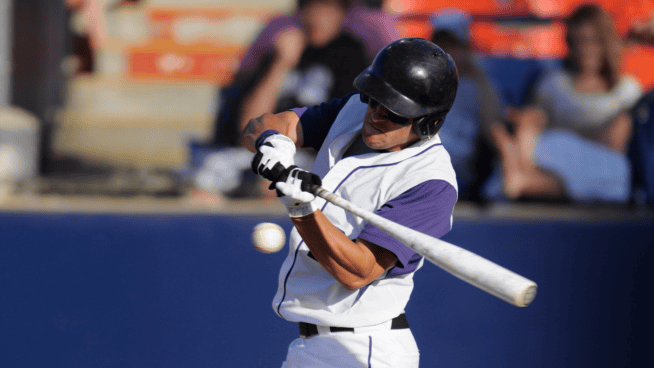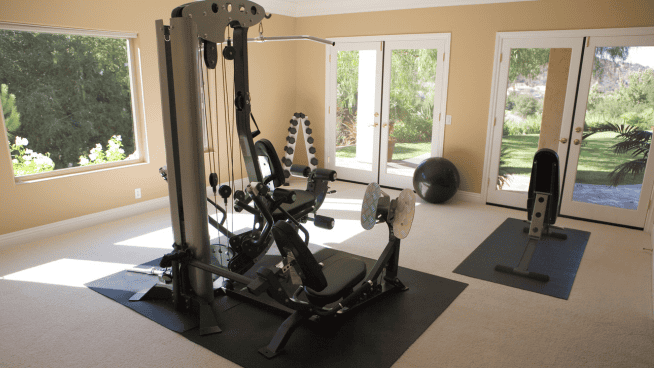Stick With CrossFit? Pros and Cons for Hockey Players
CrossFit has been offering hockey training in some of its box gyms. But do training for hockey and the CrossFit method—short, intense, no-frills workouts—actually complement each other? (Learn about the evolution of CrossFit.)
We looked at some of the pros and cons of CrossFit training for hockey players.
CrossFit Pros
Environment
At CrossFit, you work as a team in small groups with your trainer, encouraging and egging each other on. This competitive yet supportive environment doesn’t happen often at your regular gym.
Endurance
CrossFit workouts often require many repetitions of each exercise, helping hockey players achieve the muscular endurance they’ll need once the season rolls around. The full-body exercises also mimic the sport’s simultaneous demands of skating, stickhandling, and checking. (See Increase your speed with Sled Pushes.)
Variety
One of the main reasons players stop training is because they get bored. The one thing you won’t experience at a CrossFit gym is boredom, thanks to varied workouts that include everything from rope-pulling to tire-flipping.
Crossfit Cons
Lack of Specificity
CrossFit offers so much variety that in some cases it lacks focus on hockey training. You could end up training for power, endurance, strength, and speed all in the same week. That isn’t the best approach for players looking to improve specific aspects of their game. CrossFit proponents argue that mixing things up will make you a better athlete—which it will to an extent—but you need to focus on specific areas to have any chance of achieving elite status on the ice.
High Risk of Injury
Olympic lifts, one of the building blocks of CrossFit training, require precise technique to gain maximum results. If they are done too often, your muscles may become tired and your technique may break down. These types of lifts should be done with sets of three to five reps max. Often, you’ll see CrossFit trainers doing Olympic lifts with higher reps, which increases the risk injury.
Lack of Movement Preparation and Injury Prevention
Some CrossFit gyms don’t include hockey-specific moves like hip mobility exercises in their workouts. Because of the amount of hip flexion they use over the course of a season, hockey players need these drills to stay safe. If you decide CrossFit is the best option for you, discuss these concerns with your trainer or coach. Ensure that they are aware of your specific needs. Your health should not be compromised under any circumstances—even if a personal record is on the line. (Learn how to safely perform CrossFit.)
For more hockey training information, go to Star Factory Fitness and check out The Complete Hockey Training System.
Photo: crossfit.com
RECOMMENDED FOR YOU
Stick With CrossFit? Pros and Cons for Hockey Players
CrossFit has been offering hockey training in some of its box gyms. But do training for hockey and the CrossFit method—short, intense, no-frills workouts—actually complement each other? (Learn about the evolution of CrossFit.)
We looked at some of the pros and cons of CrossFit training for hockey players.
CrossFit Pros
Environment
At CrossFit, you work as a team in small groups with your trainer, encouraging and egging each other on. This competitive yet supportive environment doesn’t happen often at your regular gym.
Endurance
CrossFit workouts often require many repetitions of each exercise, helping hockey players achieve the muscular endurance they’ll need once the season rolls around. The full-body exercises also mimic the sport’s simultaneous demands of skating, stickhandling, and checking. (See Increase your speed with Sled Pushes.)
Variety
One of the main reasons players stop training is because they get bored. The one thing you won’t experience at a CrossFit gym is boredom, thanks to varied workouts that include everything from rope-pulling to tire-flipping.
Crossfit Cons
Lack of Specificity
CrossFit offers so much variety that in some cases it lacks focus on hockey training. You could end up training for power, endurance, strength, and speed all in the same week. That isn’t the best approach for players looking to improve specific aspects of their game. CrossFit proponents argue that mixing things up will make you a better athlete—which it will to an extent—but you need to focus on specific areas to have any chance of achieving elite status on the ice.
High Risk of Injury
Olympic lifts, one of the building blocks of CrossFit training, require precise technique to gain maximum results. If they are done too often, your muscles may become tired and your technique may break down. These types of lifts should be done with sets of three to five reps max. Often, you’ll see CrossFit trainers doing Olympic lifts with higher reps, which increases the risk injury.
Lack of Movement Preparation and Injury Prevention
Some CrossFit gyms don’t include hockey-specific moves like hip mobility exercises in their workouts. Because of the amount of hip flexion they use over the course of a season, hockey players need these drills to stay safe. If you decide CrossFit is the best option for you, discuss these concerns with your trainer or coach. Ensure that they are aware of your specific needs. Your health should not be compromised under any circumstances—even if a personal record is on the line. (Learn how to safely perform CrossFit.)
For more hockey training information, go to Star Factory Fitness and check out The Complete Hockey Training System.
Photo: crossfit.com











